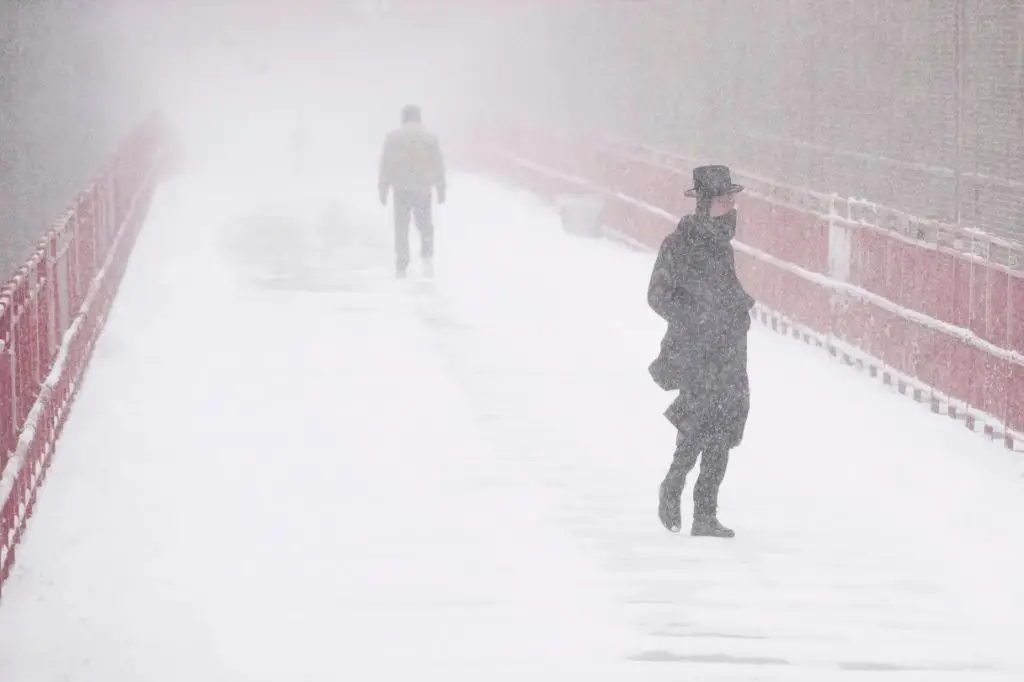Does It Snow A Lot In Williamsburg Va?
Williamsburg is a historic city located in the coastal plain region of southeastern Virginia. With a population of around 15,000 residents, Williamsburg is well-known for its living history museum of Colonial Williamsburg and the nearby amusement parks. The climate of Williamsburg is classified as humid subtropical, featuring mild winters and hot, humid summers.
This article will examine how much snowfall Williamsburg normally receives each winter. Factors like annual snow totals, major snowstorms, winter weather patterns, and the impacts and preparedness for snow will be explored.
Williamsburg’s Climate
Williamsburg is located in southeastern Virginia, situated along the Virginia Peninsula between the York and James Rivers. It has a humid subtropical climate, characterized by mild winters and long, hot, humid summers according to Best Places. Due to its proximity to the Chesapeake Bay and Atlantic Ocean, the area experiences seasonal fluctuations in temperature and precipitation.
Winters in Williamsburg are cool and relatively mild. According to the climate data from Mr. Williamsburg, daily average high temperatures in the winter months of December, January and February range from the mid 40s to low 50s°F. Overnight lows typically drop into the 20s and 30s°F. Severe cold is infrequent, though brief cold spells may bring temperatures below 20°F. While winter precipitation is not abundant, around 3-5 inches of snow can be expected annually.
Summers are hot and humid, with average highs in the upper 80s to low 90s°F from June through August. The combination of heat and humidity creates a muggy, oppressive environment during the summer. Afternoon thunderstorms are common and help provide some relief from the heat. At night, temperatures drop to around 70°F on average.
Fall and spring are transitional seasons with comfortable weather. Average highs range from the 60s to 70s°F, while lows are in the 40s to 50s°F. These shoulder seasons experience more moderate humidity and precipitation as well.
Annual Snowfall
Williamsburg receives an average annual snowfall of around 8 inches according to weather data from the National Weather Service (https://www.bestplaces.net/climate/city/virginia/williamsburg). However, snow totals can vary widely from year to year, ranging from near 0 inches in warm winters up to over 20 inches in particularly snowy years.
The historical record shows the greatest single-season snowfall in Williamsburg occurred in the winter of 2009-2010 when nearly 30 inches accumulated. Other notably snowy winters were 1995-1996 (22 inches), 1960-1961 (21 inches), and 1977-1978 (20 inches). In contrast, the winters of 1949-1950 and 1972-1973 saw almost no measurable snow at all (https://www.weather-us.com/en/virginia-usa/williamsburg-climate).
While heavy snow seasons are intermittent in Williamsburg, light to moderate snowfalls of 1-6 inches occur more regularly, particularly in the months of January and February.
Major Snowstorms
The Williamsburg area has experienced several major snowstorms that brought over a foot of snow and had significant impacts. In January 2000, a powerful nor’easter slammed the Mid-Atlantic region with over 30 inches of snow in parts of Virginia (https://www.washingtonpost.com/news/capital-weather-gang/wp/2017/01/09/photos-a-snowstorm-to-remember-in-williamsburg-virginia/). Williamsburg was buried under 20 inches of snow, and the area was paralyzed for days. Roads became impassable, schools and businesses closed, and power outages affected thousands of residents.

Another major snowstorm struck in February 2003 during President’s Day weekend. This massive blizzard dumped over 20 inches of snow in Williamsburg and some surrounding areas (https://www.9news.com/article/news/presidents-day-blizzard-buries-states-across-the-eastern-us-20-deaths-blamed-on-storm/73-345405313). The heavy snow collapsed roofs and knocked down trees and power lines. Travel was extremely dangerous or impossible, airports shut down, and cities across the region were at a standstill. The snow removal and recovery efforts took days, with schools and offices closed for a week in many areas.
Winter Weather Patterns
Nor’easters are one of the main drivers of significant winter storms in Williamsburg and the rest of eastern Virginia. Nor’easters are weather systems typically produced by the interaction of the jet stream from the northwest with cold air moving across the water south of New England. This interaction produces counterclockwise winds that carry moisture inland, resulting in heavy snow and mixed precipitation. During a large nor’easter, Williamsburg and the surrounding area can see over a foot of snow (WINTER STORMS AND NOR’EASTERS).
In addition to nor’easters, Williamsburg sees snow from typical winter weather patterns like cold fronts pushing down from the north and low pressure systems moving in from the west. These systems can bring lighter accumulations of a few inches at a time. Frigid air from the north pooling with Gulf of Mexico moisture often creates ideal conditions for snow (Winter Weather in Williamsburg Virginia, United States). Overall, the interaction of cold fronts, low pressure systems, and nor’easters coming from different directions contributes to Williamsburg’s annual snow totals.
Impacts of Snowfall
Snowfall in Williamsburg can have major impacts on transportation, schools, and tourism. Heavy snow makes roads slippery and dangerous to drive. Main roads are often plowed, but side streets can remain buried under snow for days. Schools regularly close for snow days when roads are impassable for buses and parents. Tourism is a major part of Williamsburg’s economy, focused on Colonial Williamsburg, Busch Gardens, Water Country USA and more. Big snowstorms that shut down roads and attractions can significantly impact the number of visitors and revenue during winter months (Sources: https://www.bestplaces.net/climate/city/virginia/williamsburg, https://williamsburgwinery.com/a-siberian-snow-blizzard-in-williamsburg/).
Preparing for Snow
When winter storms strike in Williamsburg, it’s important for residents to be prepared. This involves having supplies on hand and taking steps to winterize homes in advance of snow and ice.
The Virginia Department of Emergency Management recommends having emergency kits ready with supplies like flashlights, batteries, bottled water, non-perishable food, and blankets (Virginia Water Radio, 2021).
It’s also wise to have snow removal equipment like shovels, salt or sand, snow blowers, and snow plows ready before the winter. Vehicles should be winterized with antifreeze, wiper fluid, ice scrapers, and snow brushes as well. Generators and alternate heating sources may be needed in case of power outages. Firewood, winter clothing, and footwear should be easily accessible too.
Home winterization steps involve insulating walls, attics, and pipes, trimming overhanging tree limbs, weather stripping doors and windows, and maintaining gutters. It’s also important to learn how to shut off water valves in case pipes burst (Virginia Water Radio, 2021).
Taking these preparations seriously will help Williamsburg residents safely ride out whatever winter storms come their way.
Snow Removal
Residents and businesses in Williamsburg rely on timely and thorough snow removal services to clear roads, sidewalks, driveways, and parking lots after winter storms. The city has an extensive snow removal plan to plow major roads first, followed by secondary streets and neighborhoods (Source: https://www.bayriverstowing.com/snowplowing.html). The city aims to plow all public streets within 24 hours of snow stopping.
Many residents and businesses also hire private snow removal companies like Mulch ‘N More and Bay Rivers Towing to clear driveways and parking lots. These companies use plow trucks, snow blowers, and shovels to remove snow after storms so residents can get out and businesses can reopen quickly (Source: https://m.yelp.com/search?cflt=snowremoval&find_loc=Williamsburg%2C+VA). Prompt snow removal helps restore normal life and commerce after major weather events.
Recreation
Williamsburg receives enough snowfall each winter to allow for recreational activities like sledding, skiing, and snowboarding. The area’s rolling hills provide great sledding spots for families. Popular hills include the slopes at Waller Mill Park and Freedom Park (https://www.quora.com/What-is-the-best-winter-vacation-spot-in-the-US?top_ans=32421033).
For those interested in downhill skiing and snowboarding, there are several options within driving distance of Williamsburg. The Wintergreen Resort is about an hour away near Charlottesville and features 25 ski runs and snow tubing. Massanutten Resort near Harrisonburg offers 14 trails and a terrain park. For more advanced skiing, Snowshoe Mountain in West Virginia has 60 trails and is about a 4 hour drive from Williamsburg.
Cross country skiing is also popular when there is sufficient snow cover. Some parks in Williamsburg like Waller Mill Park and Freedom Park allow cross country skiing on certain trails after heavy snowfall. The area’s golf courses even open up for cross country skiing after big storms.
Conclusion
In summary, Williamsburg, Virginia experiences moderate seasonal snowfall each winter. On average, Williamsburg receives around 7 inches of snow per year. While major snowstorms with over 10 inches of accumulation are relatively rare, the area does see impacts from Nor’easters and other winter weather patterns that can bring 4-6 inches at a time.
The snowfall in Williamsburg is enough to create hazardous travel conditions when it occurs, requiring preparations like stocking up on supplies and having snow removal plans in place. But the winter weather also creates opportunities for recreation like sledding, snowshoeing, and ice skating.
With proper readiness and caution, Williamsburg residents are able to take the snowy days in stride each winter.





